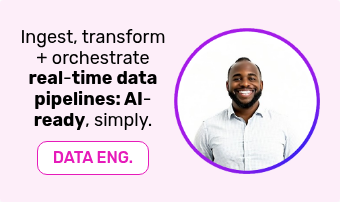Much talk around IoT is about the technology and how anything from lightbulbs to industrial manufacturing machinery can be connected to the internet so that you know what’s going on with your lights/production line/field/truck/heating/pump/ventilator and can control it from anywhere.
Whilst that’s great, the question that needs to be answered still is: WHY DO I NEED IOT?
For IoT to be of benefit to businesses (and for you to get sufficient budget to invest in it), it must be able to demonstrate tangible, bottom-line benefits for your organisation.
Much like IoT’s cousin, ‘Digital Transformation’, it offers a world of promise when applied in the right way, to the right problem. Far too much time is spent talking about the technologies involved, rather than what business problems you’re trying to solve (the use case) and what you’re going to achieve (the outcome) by solving it this new way.
To give you an example, it’s useful to know how you can connect your truck fleet to the cloud (there are many different ways), so you can monitor distance travelled and fuel consumed, but what’s better is knowing how to run your fleet more efficiently e.g. by consuming less fuel because you alert your drivers when they’ve left their vehicle idling too long; by improving compliance because you can predict which drivers are most likely to breach safety standards; by delivering better customer service because you automatically schedule trucks for maintenance when they need it and therefore never breakdown whilst out on delivery.
The reason IoT isn’t discussed in this way is that there’s advantages to vendors to sell you the kit, rather than solve your business problems, and there’s an awful lot of kit to be sold – some of which is likely to be of limited business benefit. With big players’ solutions, you’re likely to need multiple modules and then have to pay someone to stitch them together for you, before then configuring any solution to your business. This can be much more complicated than they let on and if you’re only using 30% of each of the modules that you’ve been sold, you’re not just adding complexity, but spending far more than you need.
AI + IoT will change the world, but slowly.
Our bottom-line view is that AI + IoT will change the world, but only once it’s been tried and tested - it is not going to happen overnight – however the pace of change is speeding up and will only continue to do so as it becomes more commonplace. That might be a surprising thing for an IoT company to say given the hype that often surrounds the topic, but let’s explore why we see it this way…
If someone on a production line can see a problem and fix it by pressing a button on the console, the case for investing huge amounts of money in a remote-access equivalent typically doesn’t stack up. However, when you’re using that same cloud-based technology to improve the efficiency or productivity of the manufacturing line a substantial business case can be made. The second option is harder to achieve and takes longer to implement, but it makes for a very compelling opportunity.
When weighing up the value of AI + IoT in your business, consider the following:
- Can you articulate the specific business problem that you’re trying to solve?
- Have you identified the metrics using which you can measure the impact on your business problem?
- Do you have a phased approach to rolling out increasingly complex parts of the solution?
AI + IoT is complicated.
If it sounds complicated, that’s because it is. That doesn’t mean, however, that you need to spend millions of dollars constructing a bespoke solution with large consultancies or technology companies, or spend ridiculous amounts of time trying to do it yourself.
An AI + IoT solution stack consists of 5 technologies and services, and in some instances and sectors, there’s already commodification occurring and out-of-the-box products are available. There is also a growing number of technology providers that have a network of partners who regularly work together to craft solutions from existing parts, designed especially for your industry, before fine-tuning a deployment to meet your precise needs.
Our belief at Rayven is that you should start small, find a precise use case in your organisation that’s worth solving (i.e. has a solid business benefit), deploy only the technology that is necessary to prove its impact on the bottom-line, before then looking to capitalise and extend those benefits through scaling or by growing the solution to meet other business problems/goals.
AI + IoT will only work if you utilise technology with data science and know the subject matter. Only then can you deliver meaningful outcomes.
Know why you’re investing in AI + IoT and start small (but think big), then you can create a world of change.
Speak to us today if you want to know more about how to get started (properly) or to explore what our world-leading IoT platform can do for you.




















































